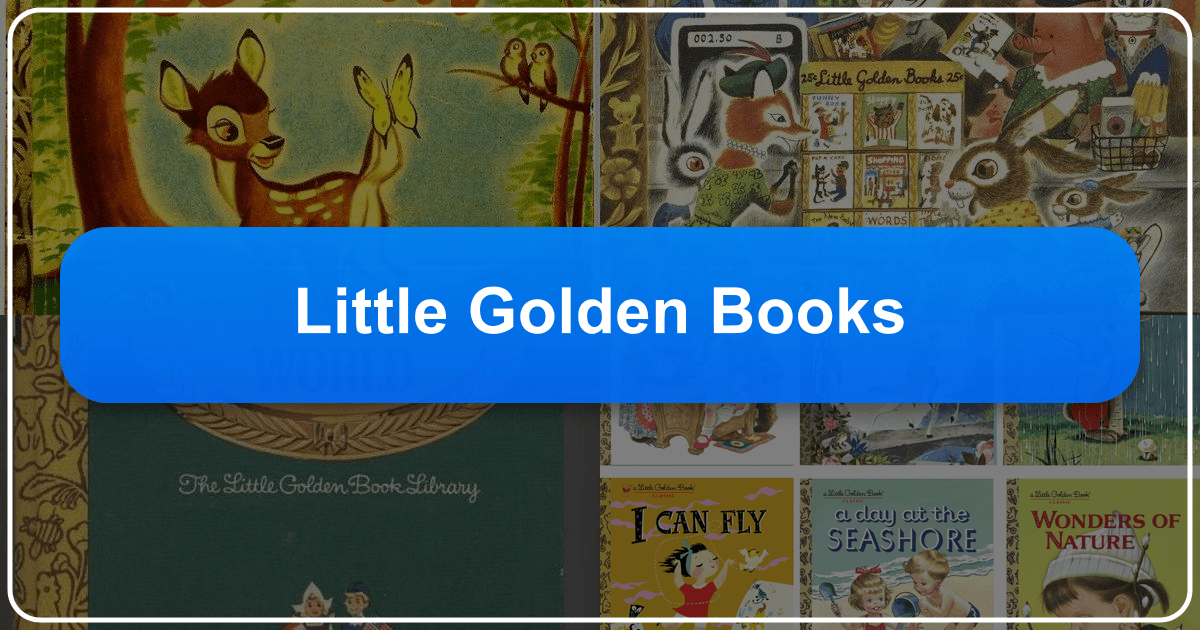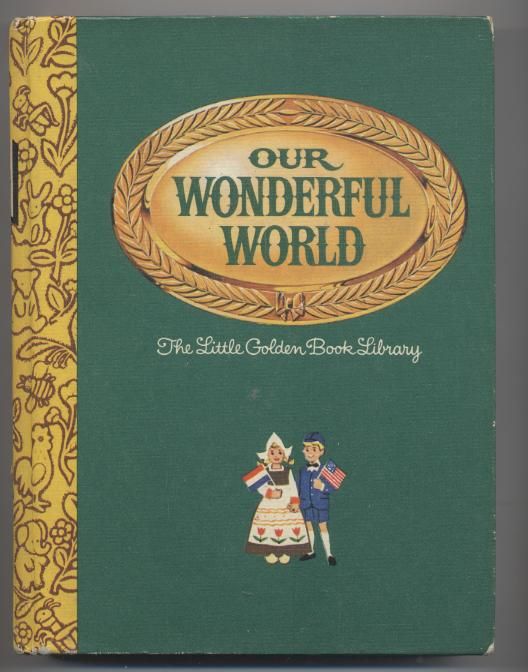Little Golden Books: A Legacy of Childhood Delight

Little Golden Books, a name synonymous with childhood reading experiences, has captivated generations with its charming stories and iconic illustrations. Since their inception in 1942, these diminutive volumes have become a cornerstone of children’s literature, leaving an undeniable cultural impact that continues to resonate today. This exploration delves into the rich history, creative minds, and enduring appeal of Little Golden Books, examining their genres, authors, educational value, and lasting influence on culture.
A Colorful History: From Humble Beginnings to Global Phenomenon
The genesis of Little Golden Books lies in a vision of affordability and accessibility. Prior to 1942, high-quality children’s books were often prohibitively expensive, limiting their reach. Georges Duplaix, head of Artists and Writers Guild Inc., a division of Western Publishing, conceived the idea of a durable, colorful, and affordable book. Collaborating with Simon & Schuster, they launched the series with twelve titles simultaneously, each priced at a groundbreaking 25 cents (approximately $5 today). This strategic move, coupled with a significant print run of 50,000 copies per title, made Little Golden Books accessible to a far wider audience.

Mary Reed, Ph.D., a professor at Teachers College, Columbia University, served as the initial editor, ensuring a high standard of content. The first twelve titles, released in October 1942, covered a diverse range of topics, including nursery rhymes, fairy tales, Bible stories, and alphabet primers. The immediate success was undeniable; three editions totaling 1.5 million copies sold out within just five months.
Simon & Schuster editor Dorothy A. Bennett played a crucial role, shaping the series’ editorial direction and collaborating with renowned authors and illustrators such as Margaret Wise Brown and Garth Williams. Bennett’s contribution extended beyond editing; she authored several Golden Books herself and introduced Little Golden Records in 1948, expanding the franchise into the realm of audio storytelling.

Further expansion came with the involvement of Lucy Sprague Mitchell, an educator and founder of Bank Street Nursery School (now Bank Street College of Education). A champion of realistic children’s literature, Mitchell’s Bank Street Writer’s Laboratory provided a new creative wellspring for the series, grounding many stories in relatable experiences drawn from everyday life. The Little Golden Books, despite changing publishers and evolving formats, have largely preserved their distinctive format: the small size, sturdy board covers, and gold-foil spine have become instantly recognizable.
By 1992, the Golden Books brand celebrated its golden anniversary, claiming sales of a billion and a half books. This remarkable achievement cemented Little Golden Books’ status as a cultural icon. Ownership of the Little Golden Books series has passed through several hands since its inception, with Simon & Schuster, Western Publishing, and currently Penguin Random House contributing to its continuing legacy. Even now, new releases continue to explore diverse themes and appeal to new generations of young readers. The recent biography on Taylor Swift, for instance, set a new record for fastest-selling book in the series’ history.

The Evolution of Formats
While the core format of the Little Golden Books remains consistent, the enterprise has embraced evolving media technologies. In addition to the original hardcover format, Little Golden Books have been adapted into a variety of formats, including records, tapes, videos, CD-ROMs, and even apps. This adaptability has allowed the series to maintain relevance and reach children through diverse platforms, ensuring its place as a timeless fixture in the world of children’s literature.
The Literary Landscape: Authors and Illustrators
The success of Little Golden Books is inextricably linked to the talent of the authors and illustrators who brought the stories to life. Margaret Wise Brown, renowned for her captivating prose in classics like “Goodnight Moon,” penned several titles. Janette Sebring Lowrey’s “The Poky Little Puppy” stands as the top-selling children’s book of all time in the United States. Edith Thacher Hurd, Phyllis Fraser, and many other skilled authors enriched the series with diverse narratives.
Equally significant are the illustrators who created the unforgettable visuals. Corinne Malvern, Tibor Gergely, Gustaf Tenggren, Feodor Rojankovsky, Richard Scarry, Eloise Wilkin, and Garth Williams, among others, each brought their unique artistic styles to the books. Many of these artists went on to become influential figures in the world of children’s book illustration. Their enduring imagery has contributed significantly to the lasting appeal of Little Golden Books.
Genre Diversity in Little Golden Books
The Little Golden Books series is remarkable for its genre diversity. While encompassing the expected children’s favorites like fairy tales and nursery rhymes, the books have also explored a surprisingly wide range of subject matter. Titles focusing on nature, science, and even religious stories are common throughout the series. The publisher’s inclusion of titles based on popular media franchises—from Disney characters and the Looney Tunes to Star Wars and contemporary pop stars—demonstrates a capacity to adapt to changing trends while maintaining the familiar and beloved Little Golden Books format.
This diversification broadened the appeal of the series, capturing the imagination of a wider range of readers and ensuring that the stories retained a connection to current events and popular culture.
Cultural Impact and Enduring Relevance
Little Golden Books’ cultural impact is multifaceted. Its simple, accessible narratives and vibrant illustrations have fostered a love of reading in millions of children. The books have served as a springboard for other media, inspiring adaptations in film, television, and even theater. This adaptability has ensured that the stories continue to engage new audiences.
Little Golden Books have also established themselves as collector’s items. The distinctive design, coupled with the emotional connection that many individuals maintain with the books from their own childhoods, has created a thriving collectors’ community. The high number of sales, the diversity of content, and the enduring artistic style of the original illustrators all contribute to the long-term appeal and collectible value of these books.
Little Golden Books in Contemporary Culture
The enduring legacy of Little Golden Books extends beyond simple nostalgia; it’s reflected in contemporary art and tributes. The “Golden Book Gown,” a unique fashion creation crafted entirely from Golden Books pages, stands as a testament to their lasting cultural relevance and inspires creative reinterpretations of these beloved books.
The enduring popularity of Little Golden Books lies in their ability to connect with children on multiple levels. The simple stories, coupled with the engaging illustrations, provide a foundation for early literacy. The use of relatable characters and situations creates a sense of familiarity and comfort that makes reading enjoyable for children. The books often impart life lessons subtly embedded in the narratives, instilling positive values and building character.
The enduring success of Little Golden Books isn’t simply a matter of fortunate timing or a clever marketing strategy. It’s a result of a commitment to quality, affordability, and an enduring appeal for both children and their caregivers. Through decades of charming stories and iconic artwork, Little Golden Books has earned its place as a timeless treasure of childhood, providing an essential and unforgettable gateway to the joy of reading for generations of children worldwide.